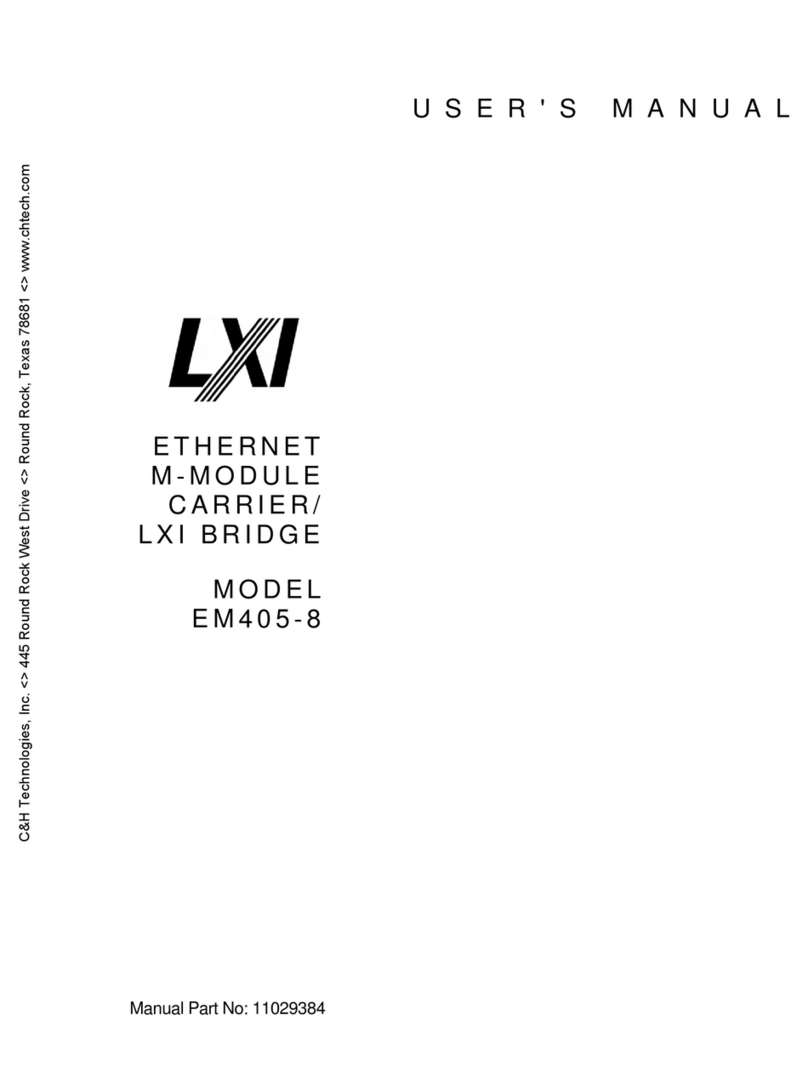
v
TABLE OF CONTENTS
1.0 GENERAL DESCRIPTION ............................................................................................1
1.1 PURPOSE OF EQUIPMENT.............................................................................................2
1.2 THE LUA SCRIPTING LANGUAGE...............................................................................2
1.3 KEY FEATURES OF EM405-8 SCRIPTING ...................................................................2
1.4 APPLICABLE REFERENCES..........................................................................................3
2.0 USING AND MANAGING SCRIPTS ............................................................................4
2.1 COMMANDS..................................................................................................................... 4
2.1.1 ? | Help ......................................................................................................................... 4
2.1.2 Data.............................................................................................................................. 5
2.1.3 Halt............................................................................................................................... 5
2.1.4 List ...............................................................................................................................5
2.1.5 Read.............................................................................................................................6
2.1.6 Remove ........................................................................................................................ 6
2.1.7 Retrieve........................................................................................................................6
2.1.8 Run............................................................................................................................... 7
2.1.9 Socket?.........................................................................................................................8
2.1.10 Upload..........................................................................................................................8
2.1.11 Ver................................................................................................................................ 9
2.2 STORING SCRIPTS AND SUPPORTING FILES............................................................ 9
2.3 SCRIPTING SOCKET INTERFACE...............................................................................10
2.3.1 Configuring the Scripting Socket Interface ............................................................... 10
2.3.2 Connecting to the Scripting Socket Interface ............................................................11
2.3.3 Interactive Mode........................................................................................................11
3.0 DEVELOPING SCRIPTS.............................................................................................. 13
3.1 DEVELOPMENT SOFTWARE – EM405-8 IVI DRIVER SOFT FRONT PANEL......13
3.2 EM405-8 EXTENSIONS LIBRARY ............................................................................... 13
3.3 PASSING DATA.............................................................................................................. 20
3.4 CALLING M-MODULE DRIVERS................................................................................ 22
3.4.1 Using Alien to Call M-Module Drivers..................................................................... 22
3.4.2 Dealing with data.......................................................................................................25
3.4.2.1 Buffers................................................................................................................25
3.4.2.2 Arrays.................................................................................................................26
3.4.2.3 Pointer Unpacking..............................................................................................27
3.4.2.4 Callback Functions.............................................................................................27
3.4.3 Building M-Module Drivers into a Linux Shared Library......................................... 28
3.5 SHARING DATA BETWEEN SCRIPTS........................................................................28
3.6 STARTUP SCRIPT ..........................................................................................................28
3.7 USING THE MASS STORAGE DEVICE.......................................................................29
4.0 USING LUA TO WRITE CUSTOM WEB PAGES....................................................30
4.1 URL OF SCRIPT BASED PAGES.................................................................................. 30
4.2 ADDING A LINK TO THE C&H NAVIGATION MENU............................................. 31
4.3 URL OF PICTURES AND OTHER SUPPORTING FILES...........................................32
4.4 PASSING ARGUMENTS TO THE SCRIPT................................................................... 32
4.5 DEVELOPING THE PAGE CONTENT..........................................................................33




























